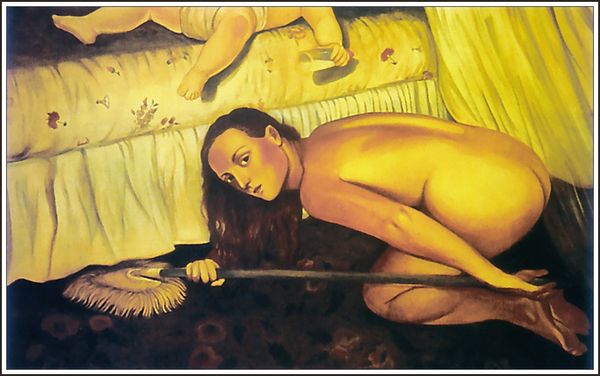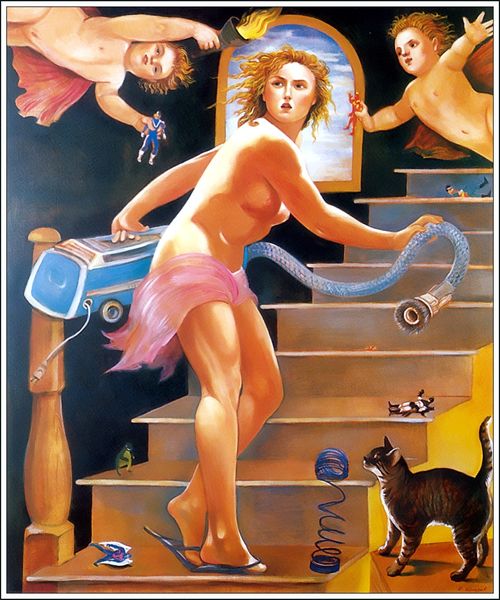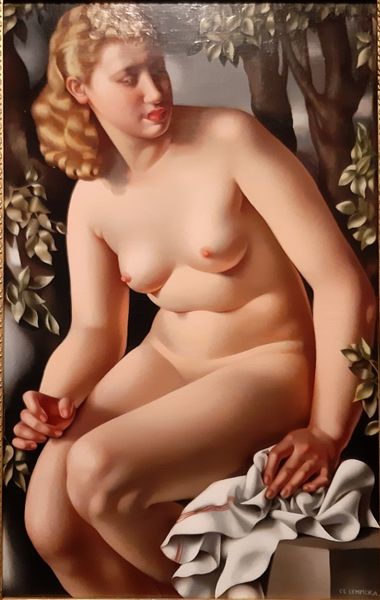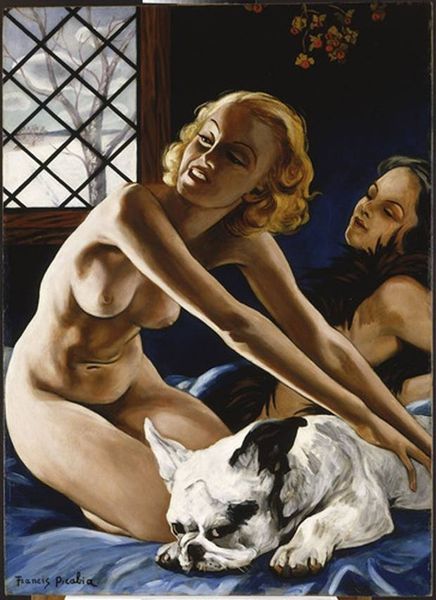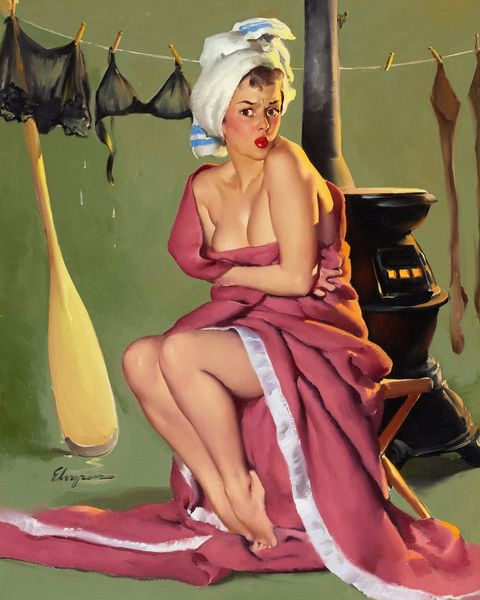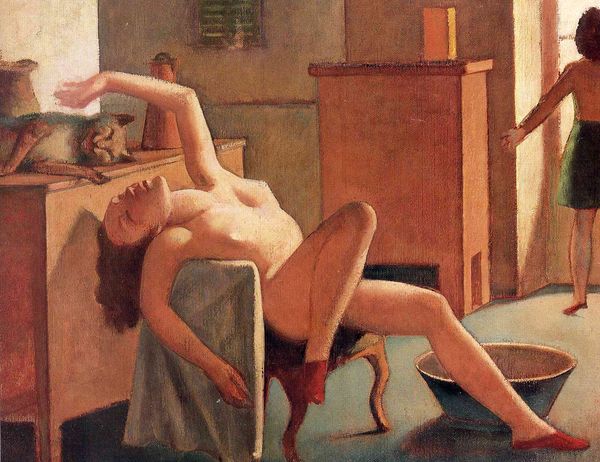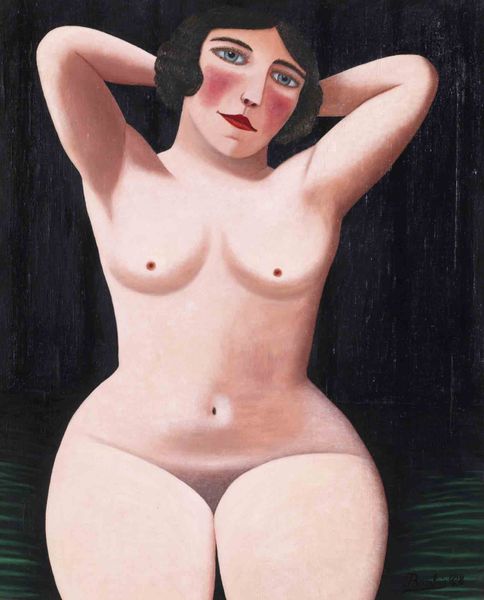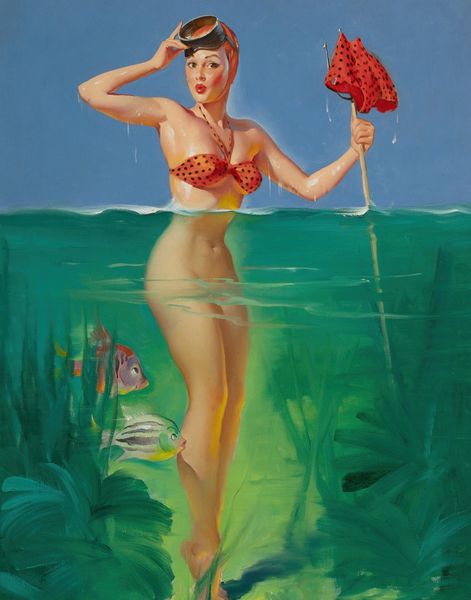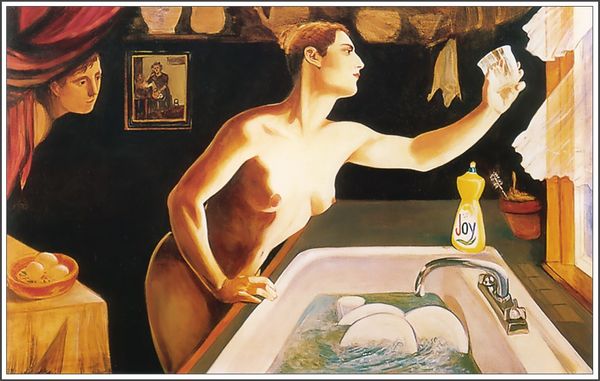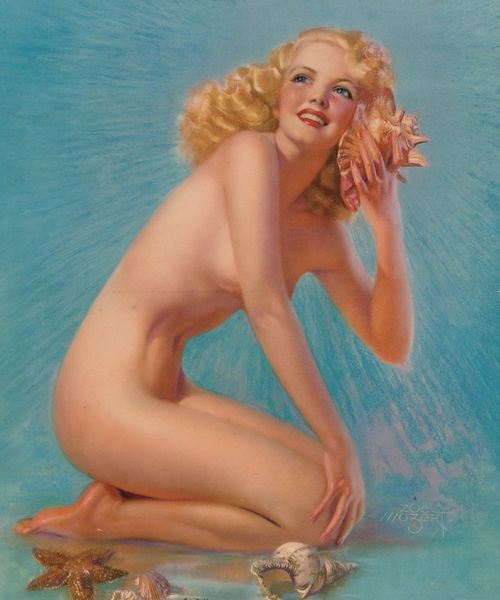
painting, oil-paint
#
painting
#
oil-paint
#
appropriation
#
landscape
#
caricature
#
figuration
#
female-nude
#
genre-painting
#
academic-art
#
nude
#
portrait art
#
modernism
#
erotic-art
Copyright: Edith Vonnegut,Fair Use
Editor: This oil painting, titled "Eternal Mopping" by Edith Vonnegut, feels really… strange. It's like a classical nude figure doing mundane housework, but in a surreal landscape. What's your interpretation? Curator: I see this piece as a potent commentary on the historical and ongoing devaluation of women's labor. By placing a classical nude, traditionally an object of aesthetic contemplation, into the domestic sphere with a mop, Vonnegut seems to be appropriating and subverting traditional artistic tropes to ask viewers to reflect on gendered expectations and labor. How does the title "Eternal Mopping" strike you in that light? Editor: It makes me think of Sisyphus, eternally pushing a boulder uphill! The "eternal" aspect suggests this is a never-ending cycle of labor, perhaps specifically female labor. But why the classical style? Curator: The classical style serves to highlight the art historical canon’s problematic treatment of the female form. Often idealized and sexualized, here the figure is forced into the drudgery of cleaning, which then raises important questions about exploitation and who benefits from such unequal labor divisions. Is she liberated, trapped, or simply acknowledging her circumstance? What does the surreal background with water pouring into more water signify to you? Editor: Maybe that even beautiful or seemingly infinite resources will just need more mopping? It is really impactful seeing those classical figures within a discussion of very current gender expectations in work. I never would have looked at it that way without you breaking that down. Curator: Precisely! And that juxtaposition makes this work powerful. The artist forces us to confront uncomfortable truths about art history's role in perpetuating inequalities and makes us rethink seemingly timeless aesthetic ideals from an intersectional lens. Editor: That's a powerful way to look at it; I feel like I see the whole piece in a new, more critical light now. Thanks for your perspective.
Comments
No comments
Be the first to comment and join the conversation on the ultimate creative platform.

